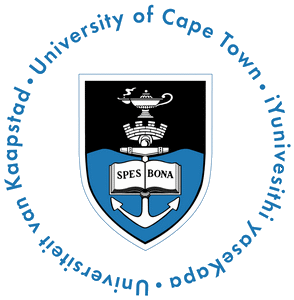Lab Pracs and The Project

E.B.E.
|
EEE3074W:
Embedded Systems
Lab Pracs and The Project |

E.B.E. |
| Outcomes and Syllabus | Details | The Project |
Scope:
This page provides an overview of the laboratory practicals and the
project for this course..
The practical aspect of this
course involves six laboratory practical assignments, which you can
work on as either a team of two, or individually. The pracs increase in
complexity, but then your abilities also increase, so the plan is that
the final practical feels just slightly more demanding than the first
one (which, don't be mistaken, will be somewhat of a challenge in it
self to most students). A single project runs in parallel with lectures
and labs, and starts, at least in a "back of your mind" level, right at
the start of the course. The project is
broken into multiple milestones, each of which need to be submitted by
a specific due date. The sections below provide more detail.
The laboratory practicals are intended to provide students with new capabilities to solve implementation problems encountered during project work. The practicals can be done individually, or in groups of two. The lab facilitator will ask random individuals to demonstrate how certain problems are solved; this tactic is used to discourage cheating. The currently planned laboratory practicals (as of this writing, January 2006), are described in Table 1; the 7th practical is optional. Please see EEE3074W Details for more information.
Table1: Brief description of laboratory practicals.
| Prac Num | Description | Files |
| Prac 0 | C programming practice | Prac0.pdf ; Prac0.doc ; Prac0.zip (baseline starting code) |
| Prac 1 | Oracle
Virtual Box & Microsoft Windows Embedded |
Prac1_Virtual_Box.pdf Prac1_Virtual_Box.doc |
| Prac 2 | MPLab
SIM & PicKit3 |
Prac2 PICKit3.pdf ; Prac2 PICKit3 ; Prac2_Hello1.zip (LEDs) ; Prac2_demos.zip (console, others) |
| Prac 3 | Introduction to Cogent CSB337 platform and ARM assembly | Prac3_CSB337.pdf ; Prac3_PASS.pdf (solution sheet) |
| Prac 4 | Using Programmable Inputs/Outputs with the AT91RM9200 on the CSB337 | Prac4_Pio.pdf ; Prac4_Pio.odt ; Prac4_Pass.pdf ; Prac4_Pass.odt |
| Prac 5 | TI Piccolo MCU controlSTICK |
Prac5_Piccolo.pdf ; Prac5_Piccolo.docx |
| Prac 6 | uCLinux | |
| Prac 7 | uCLinux and Peripherals (optional, not for marks) | |
| OLD Pracs (2010): | ||
| Prac 1 | Getting Started With GCC and ESAOA on Linux | |
| Prac 2 | CSB337 & MicroMonitor | |
| Prac 3 | AT91RM9200 PIO | |
| Prac 5 | AT91RM9200 Interrupts and the Advanced Interrupt Controller | |
The project runs for almost the entire length of the course, and it is divided into three main parts, each part building on the previous part. Table 2 describes the parts of the project, click on the links in the left column to read about a certain part of the project. For more information please see The Project and EEE3074W Details.
| Part Name | Description |
| A: Conceptualization | The project starts by tossing around possible embedded system product ideas. Posting to Project Concept Forum on Connect. This "idea tossing" strategy is used partly as a means to decide the membership of project groups. |
| B: Modeling and Experimentation | Once the concept presentation is complete, the teams need to develop a plan of action for which subsystem they want to prototype (as developing a complete system is likely to take too long). During this step, they experiment with programs and peripherals, but the deliverable involves producing high-level UML models using RT-UML. So you can sit up and take note that IT'S NOT JUST ABOUT UML MODELING! |
| C: Implementation | This is the part that probably takes the most time. For this part, a subsystem prototype needs to be constructed; but fear not: a rough and ready effort is expected. |
| D: Factory Acceptance Test | The final part of the project involves a simulated Factory Acceptance Test (or FAT), in which the subsystem prototype is demonstrated, and tests are performed. |
Copyright (c) 2006, S. Winberg, University of Cape Town. Site maintained by: S. Winberg, Department of Electrical Engineering, University of Cape Town.